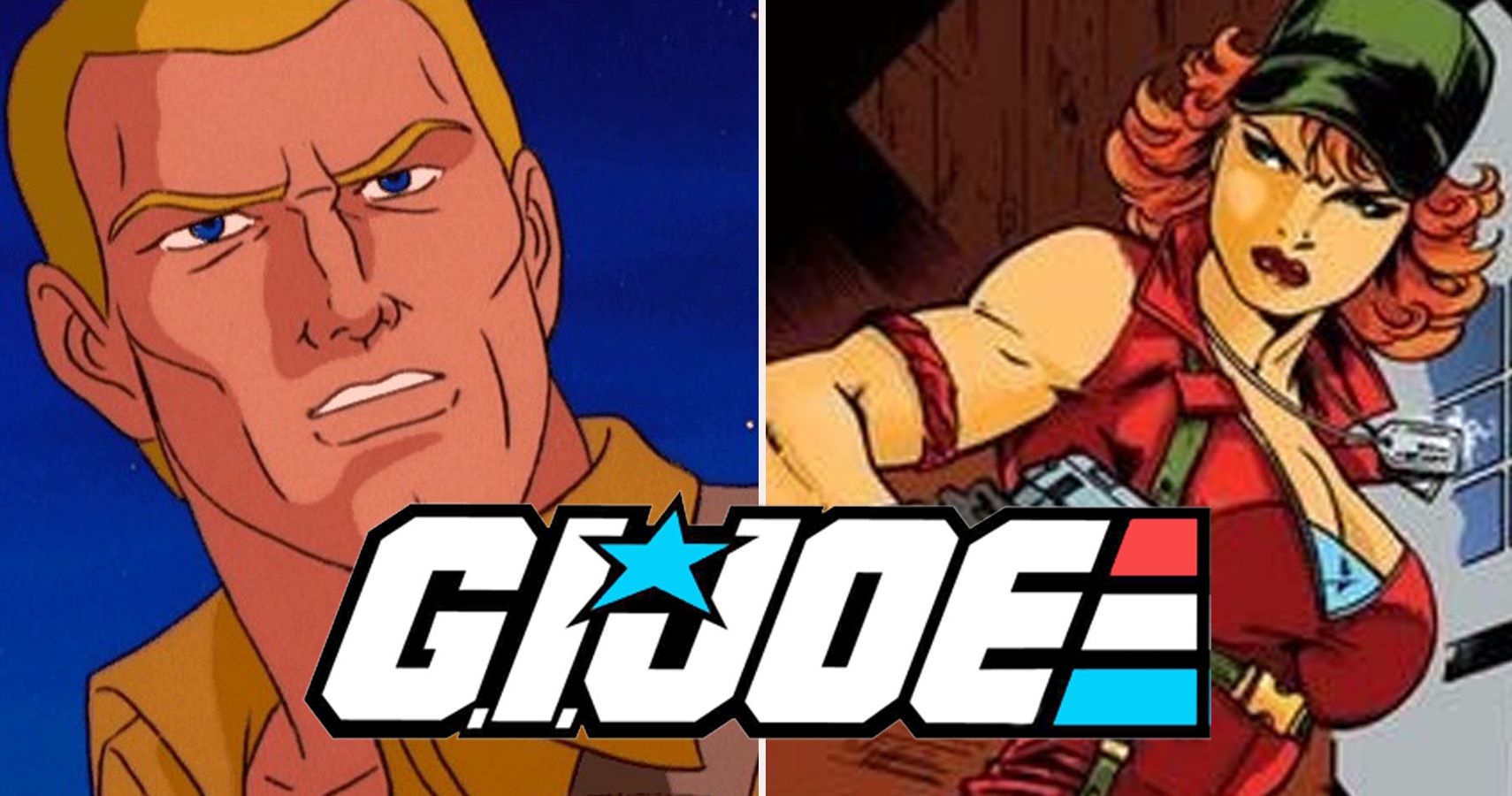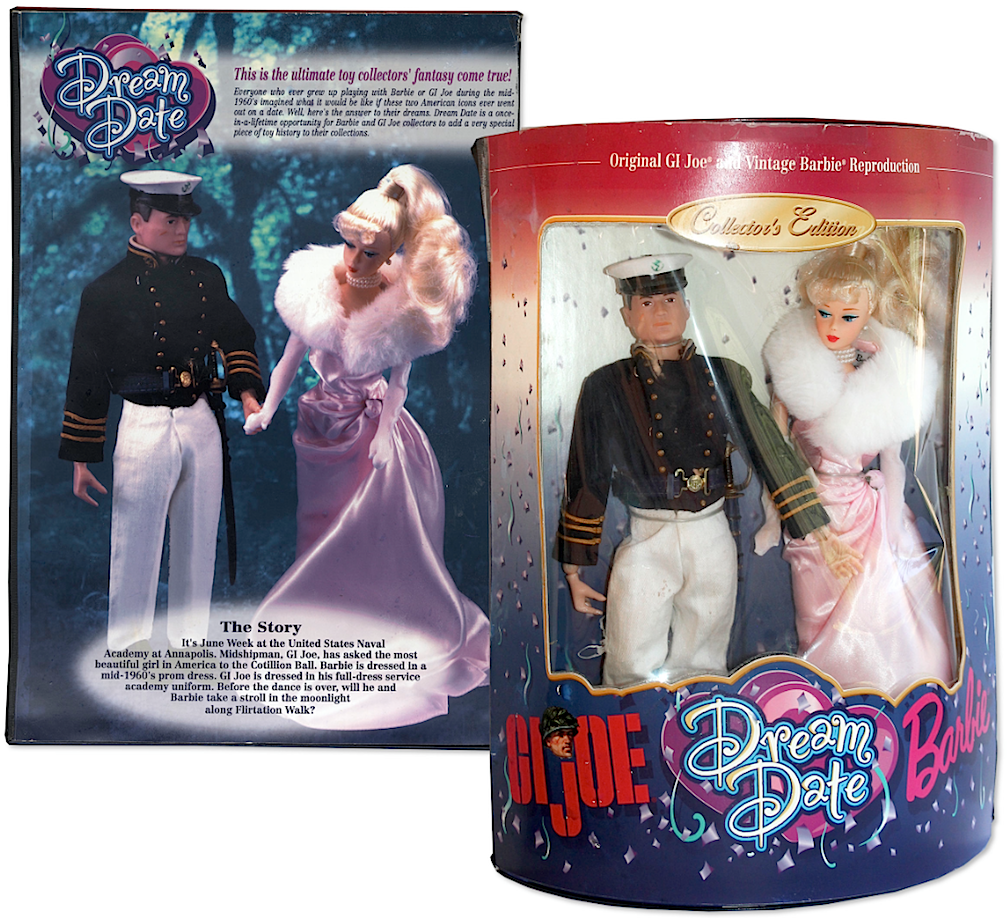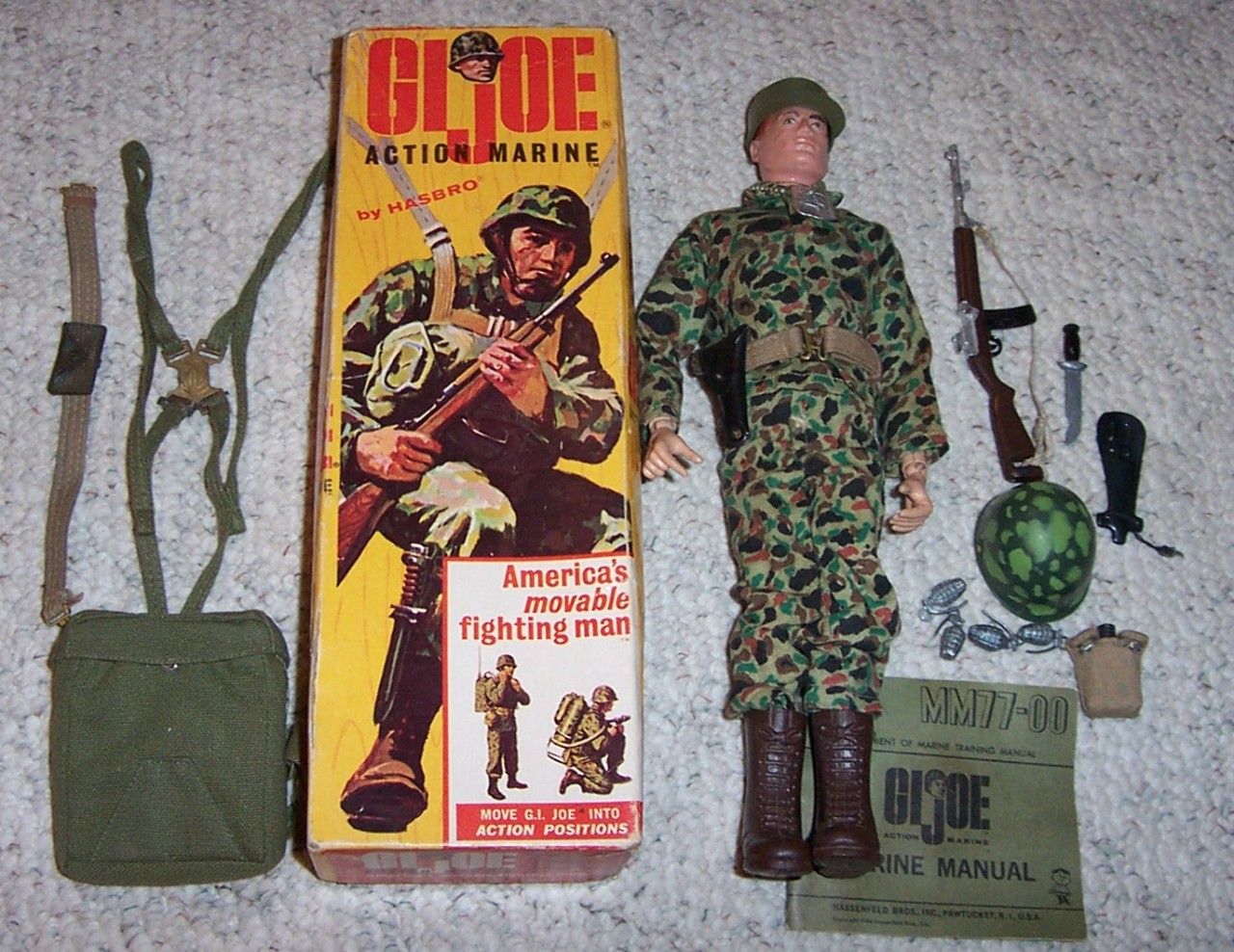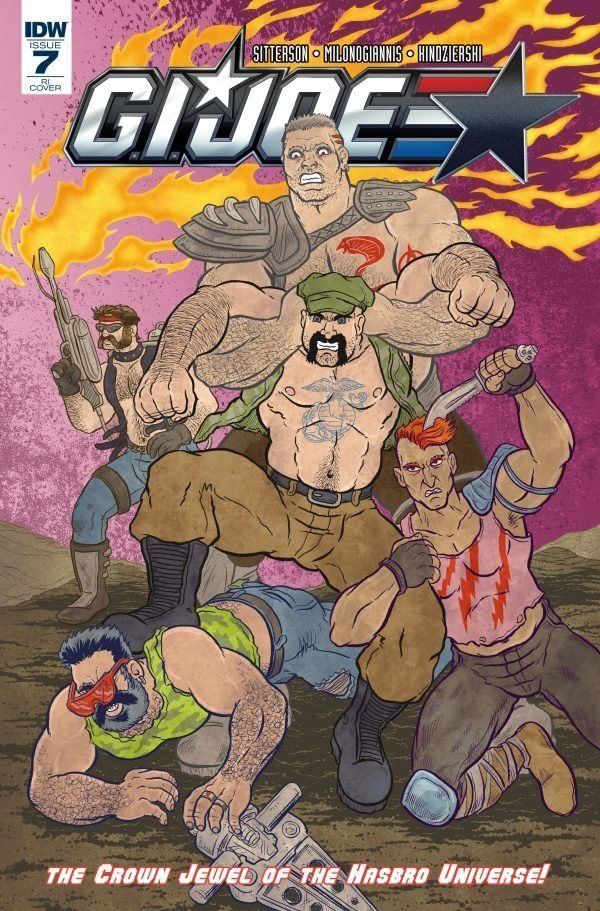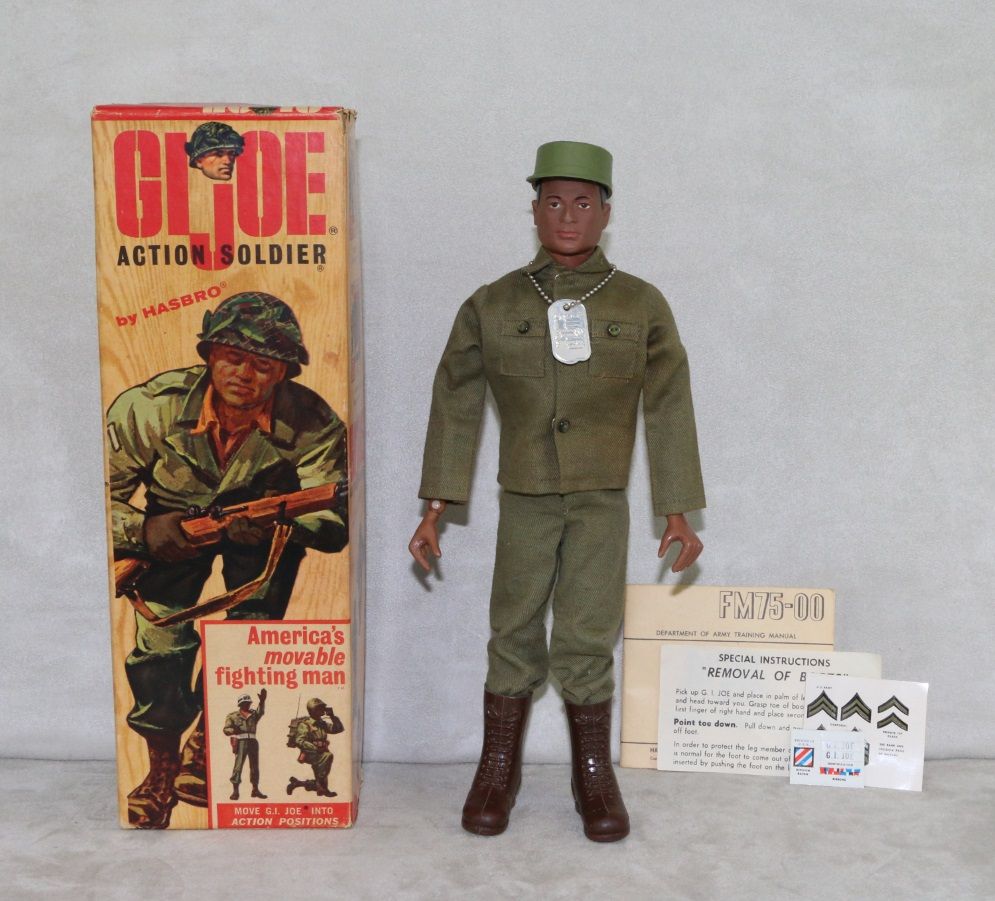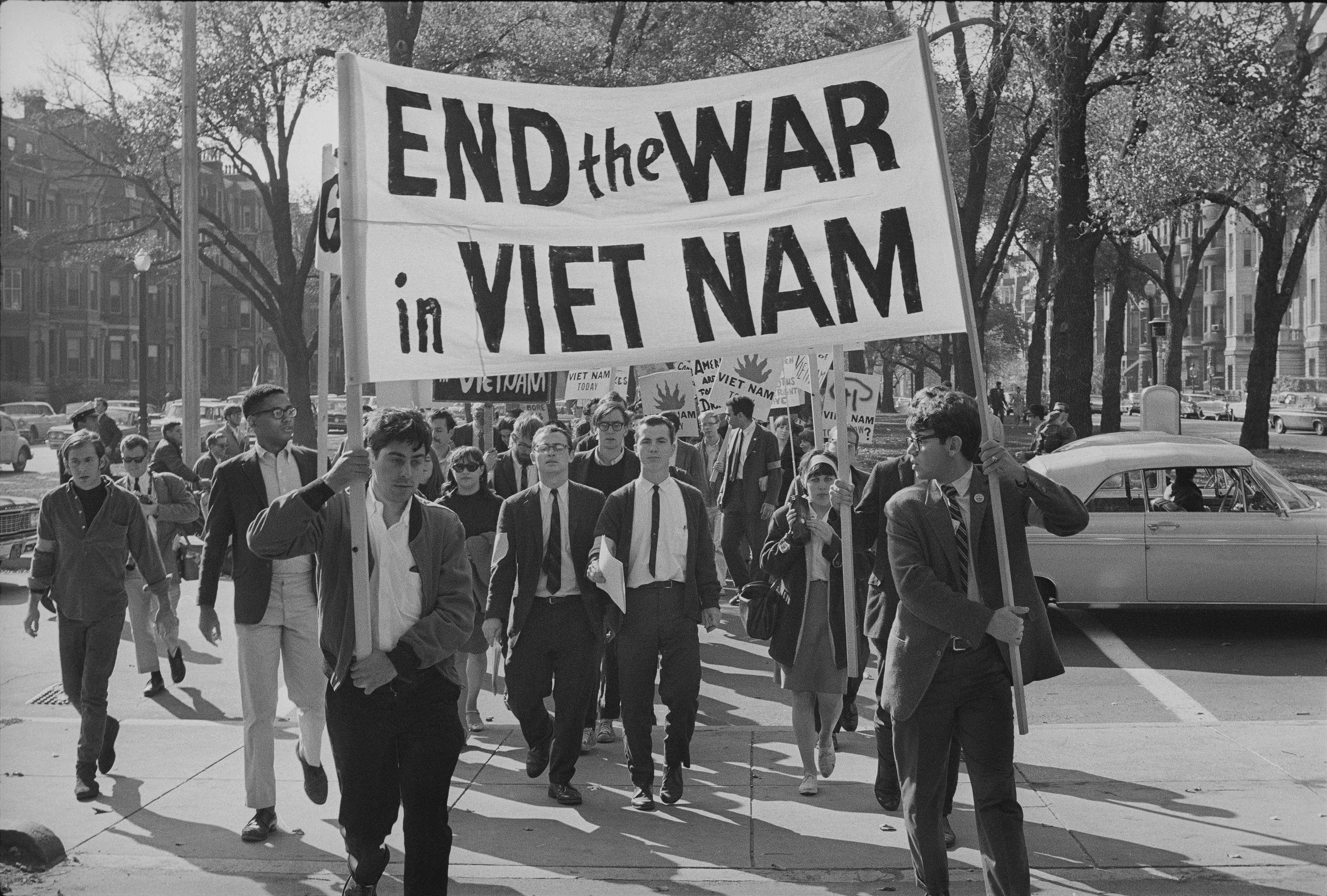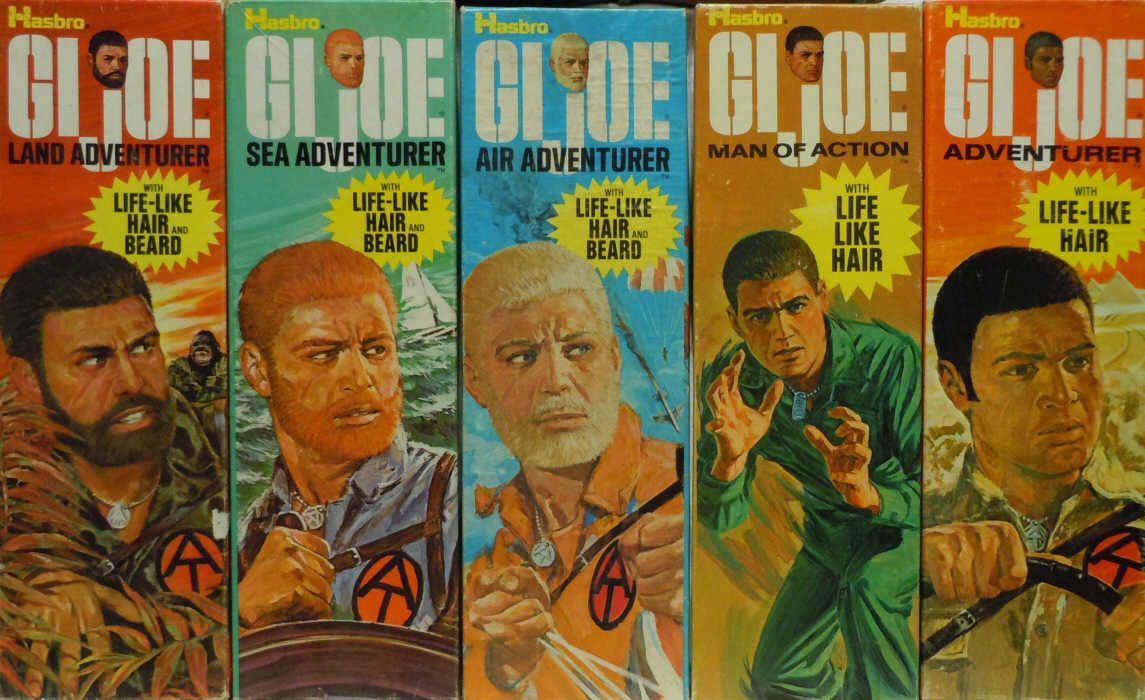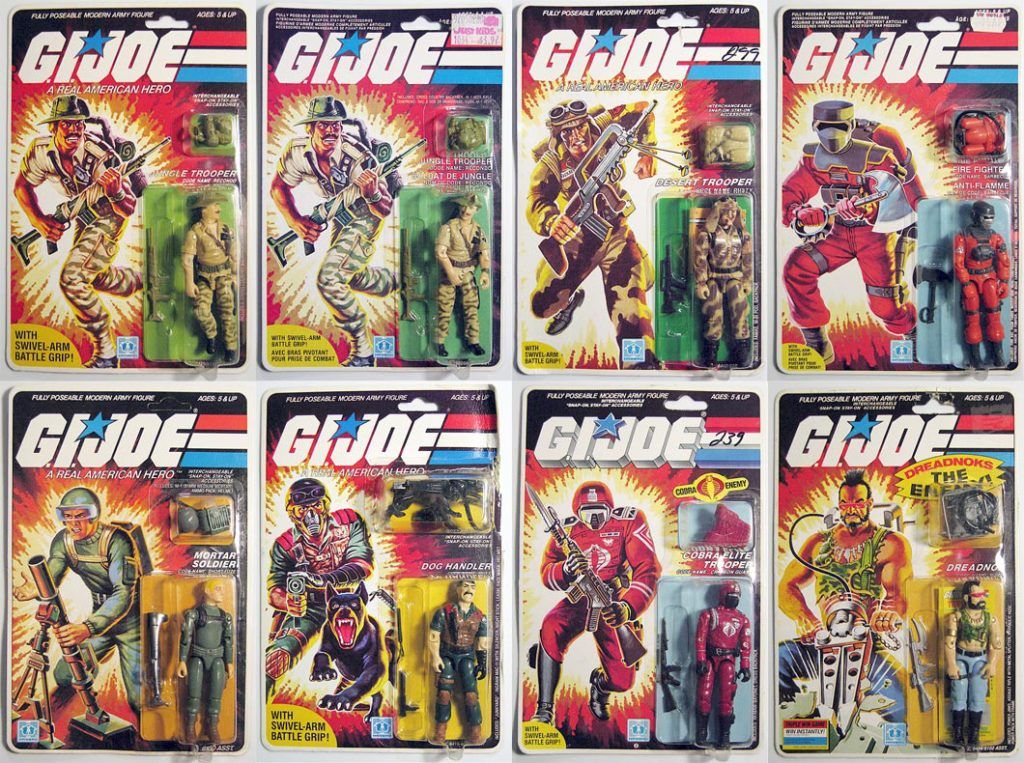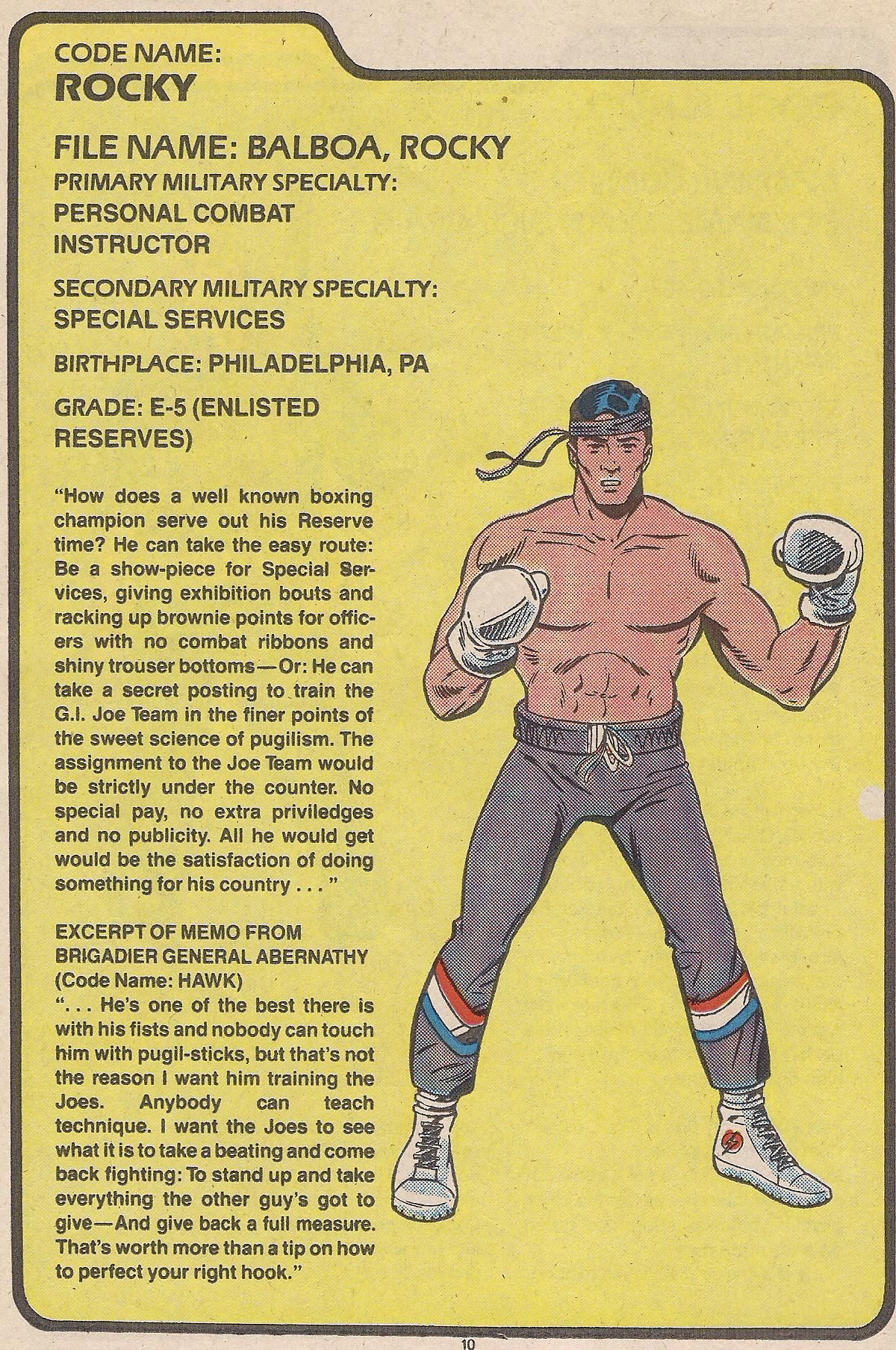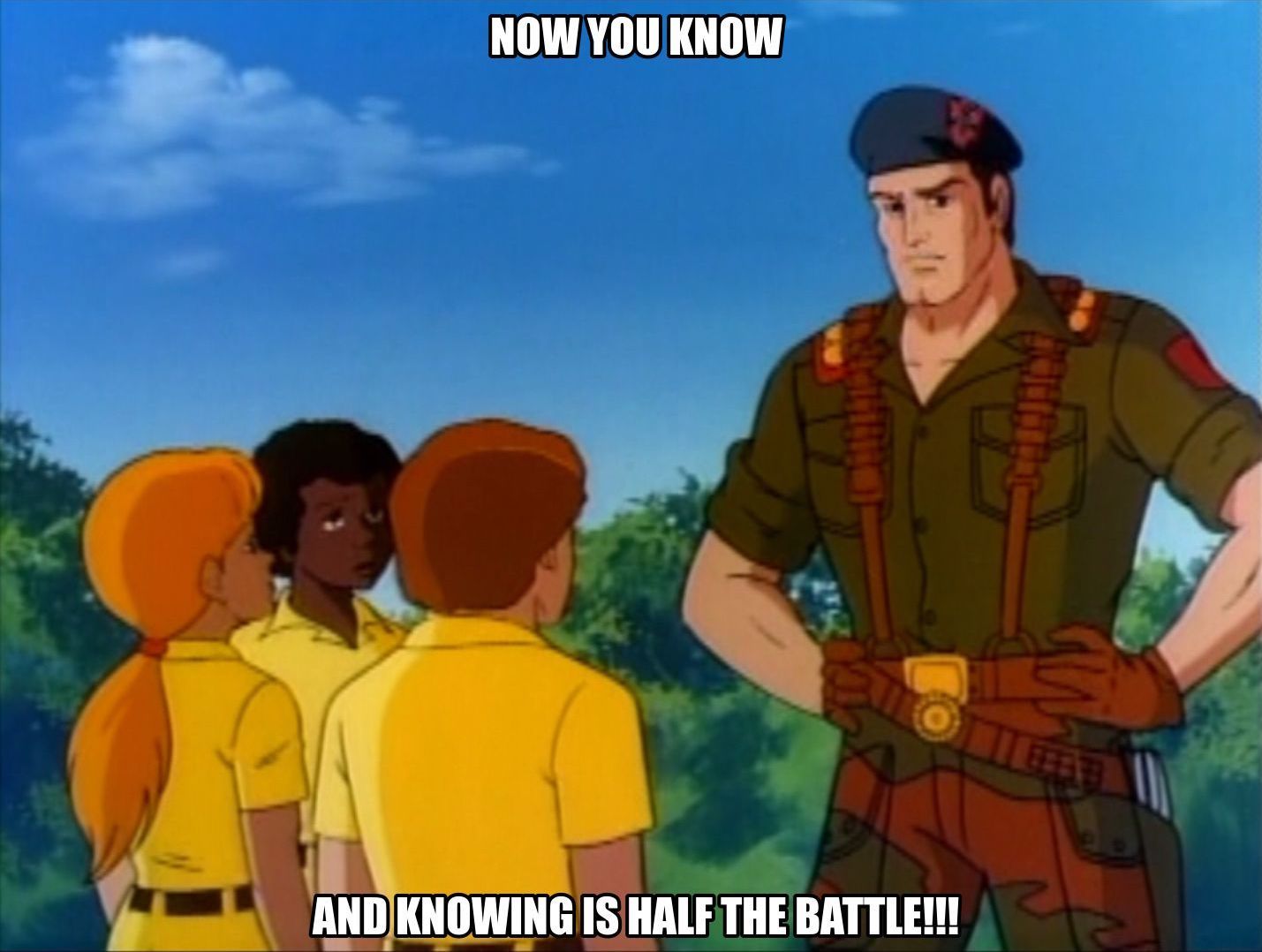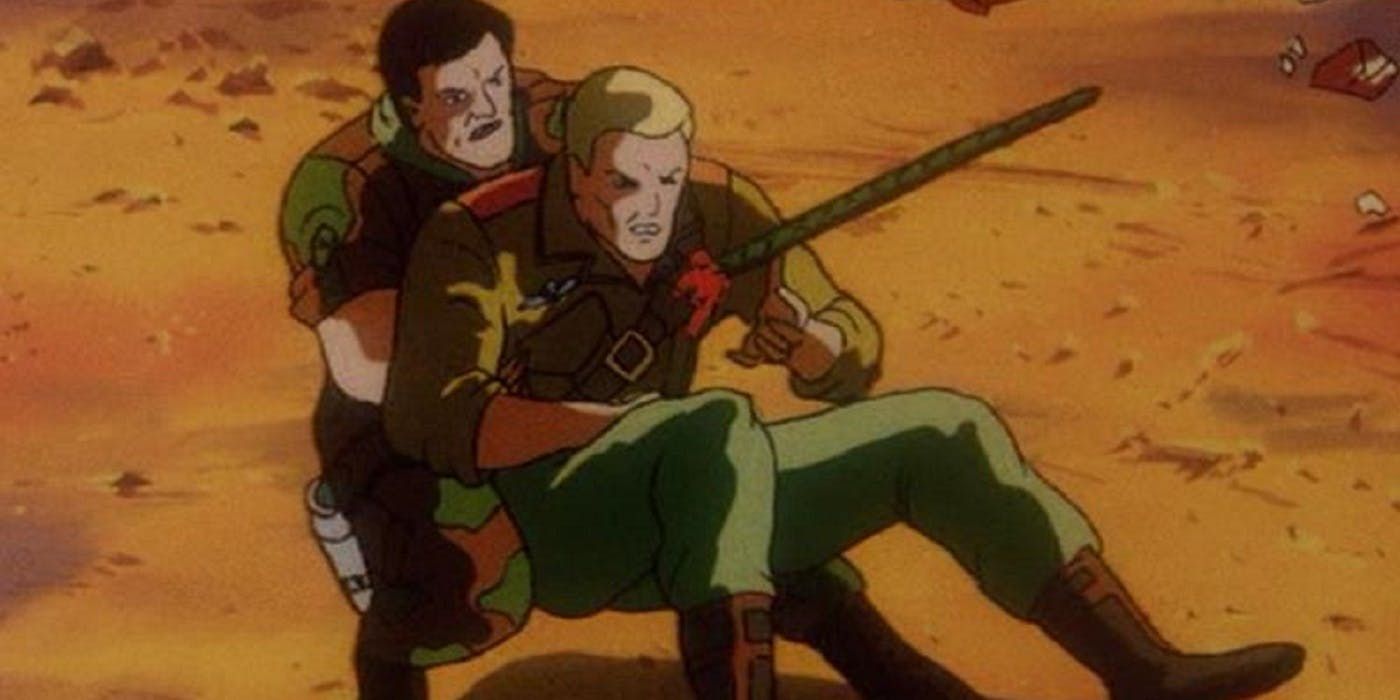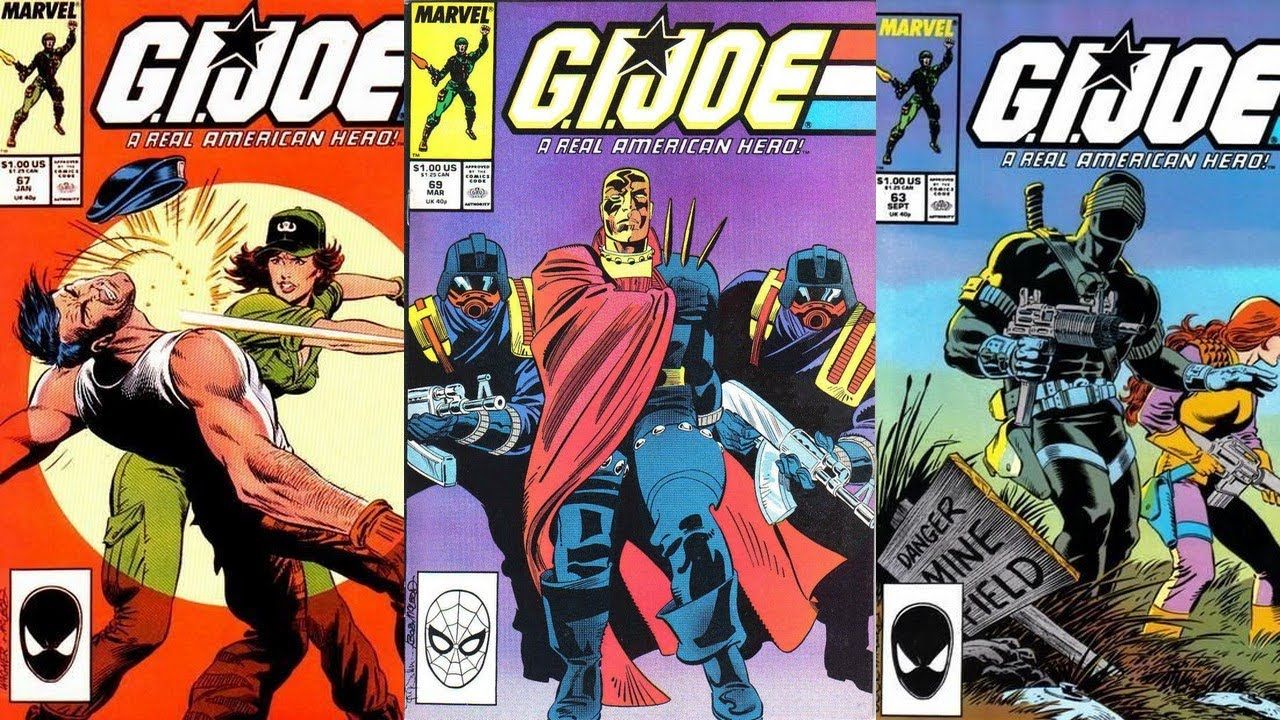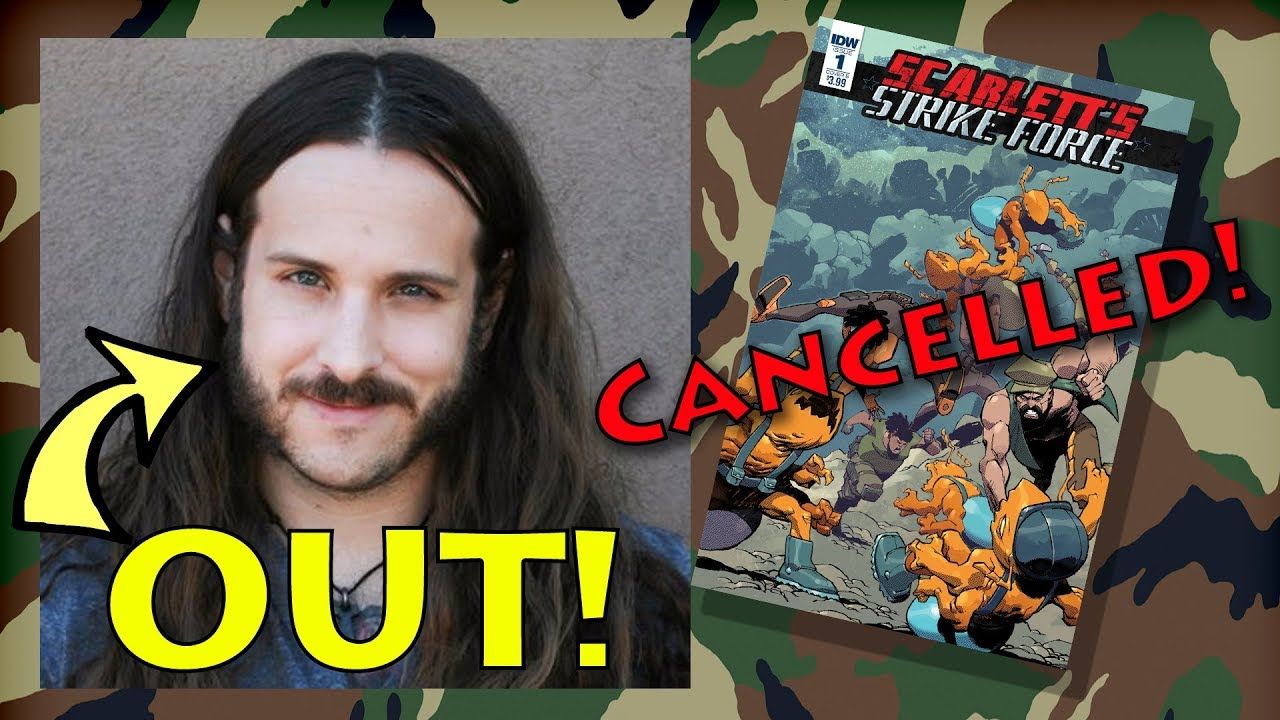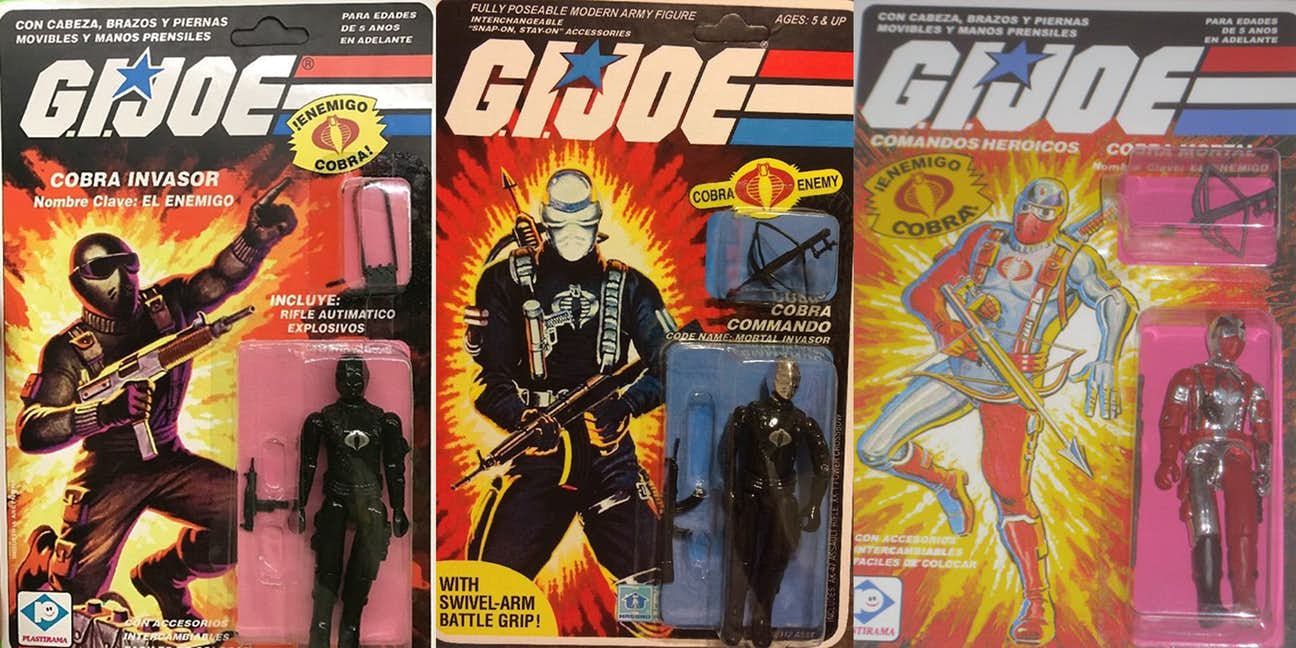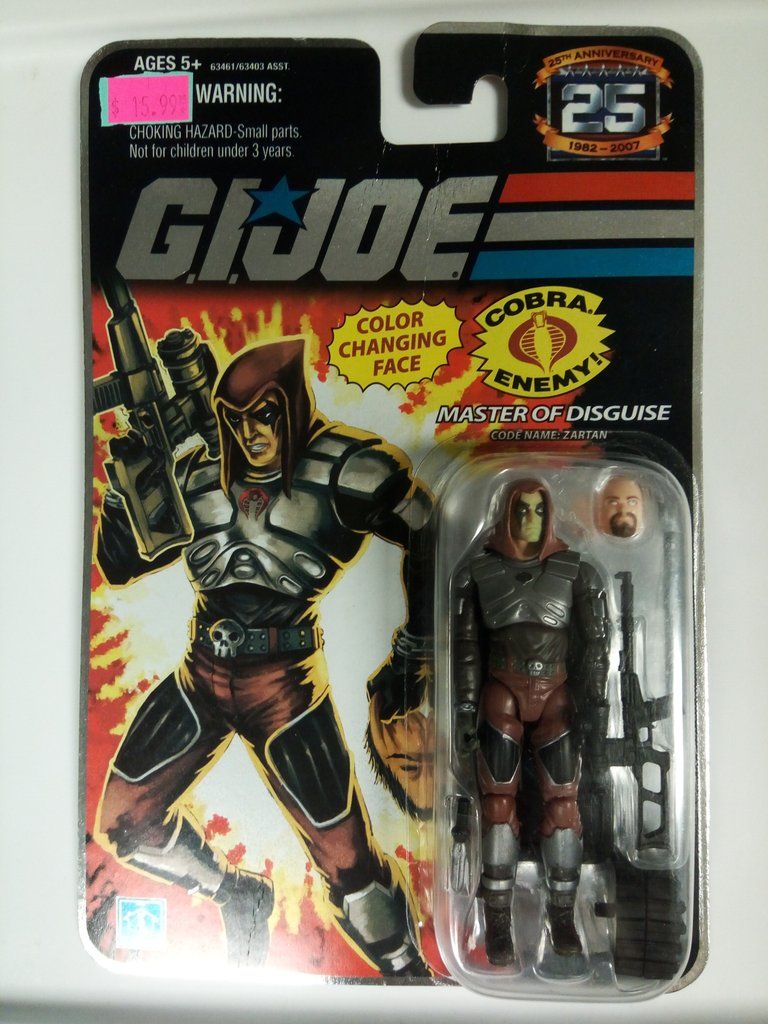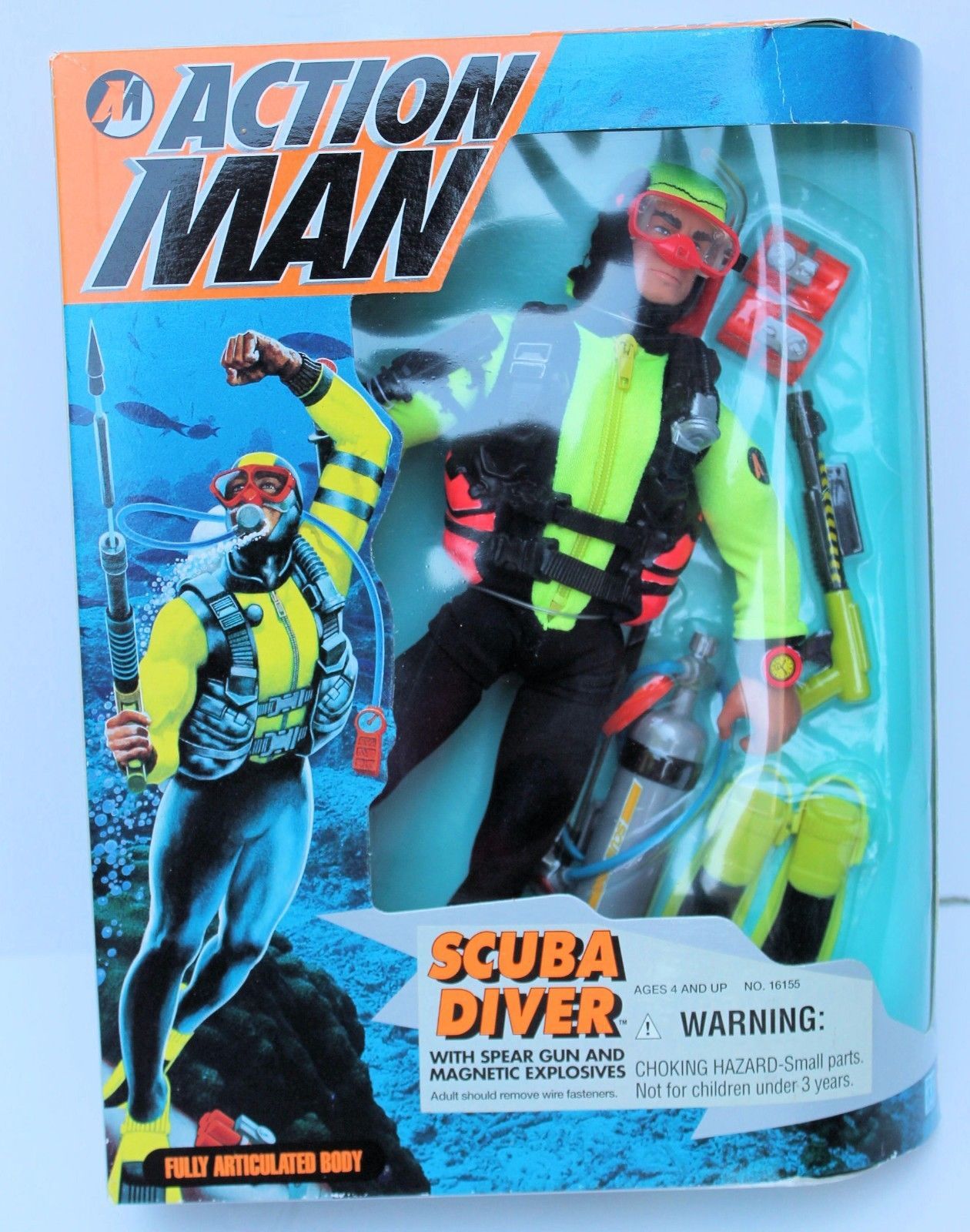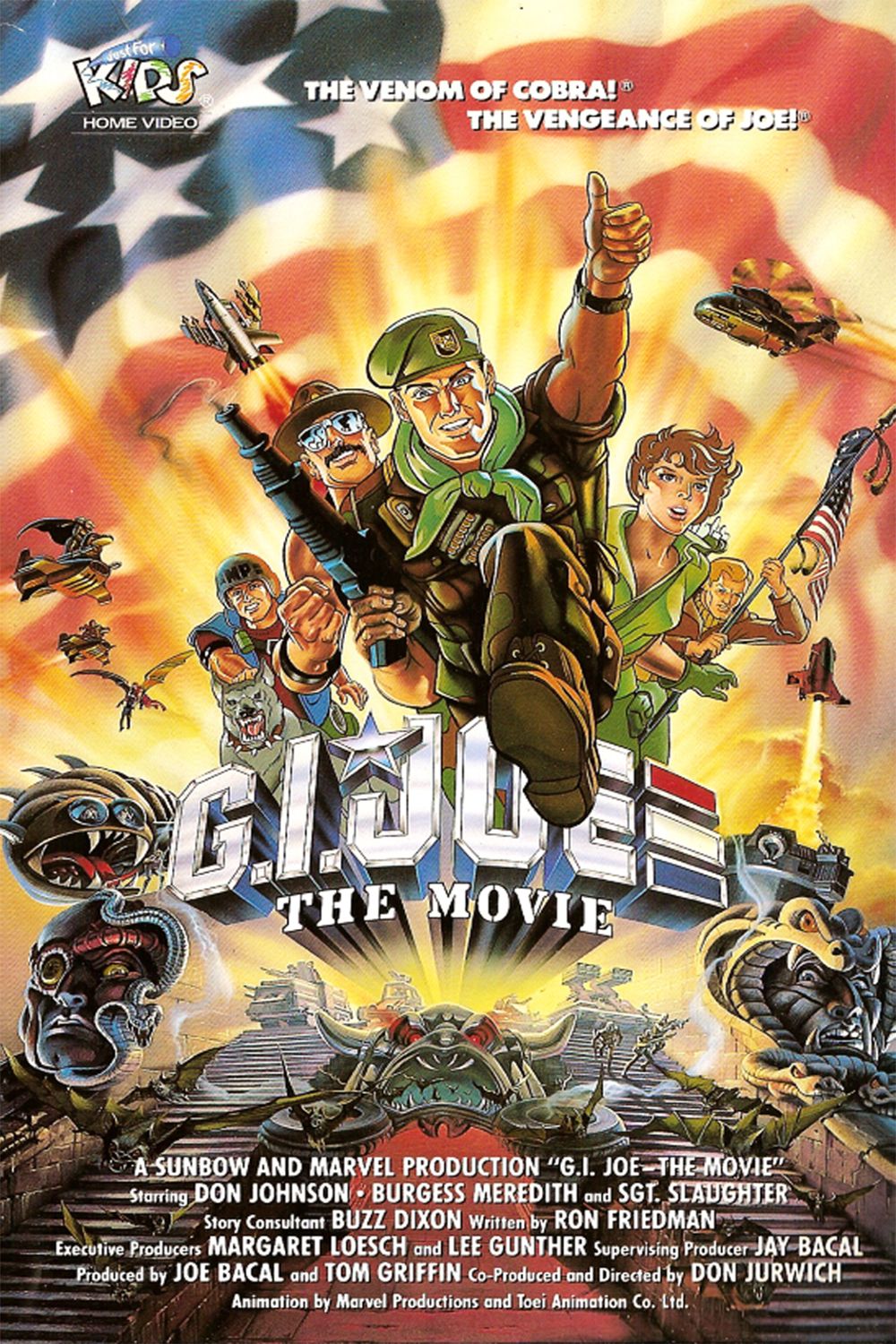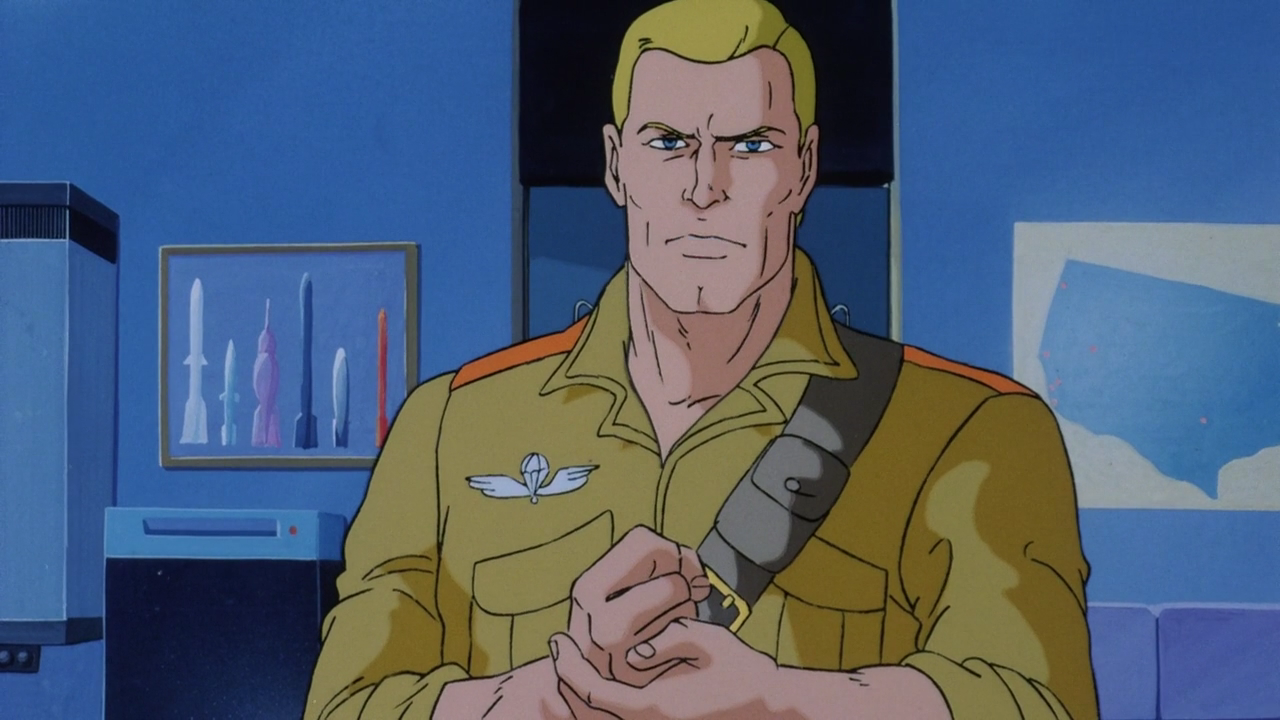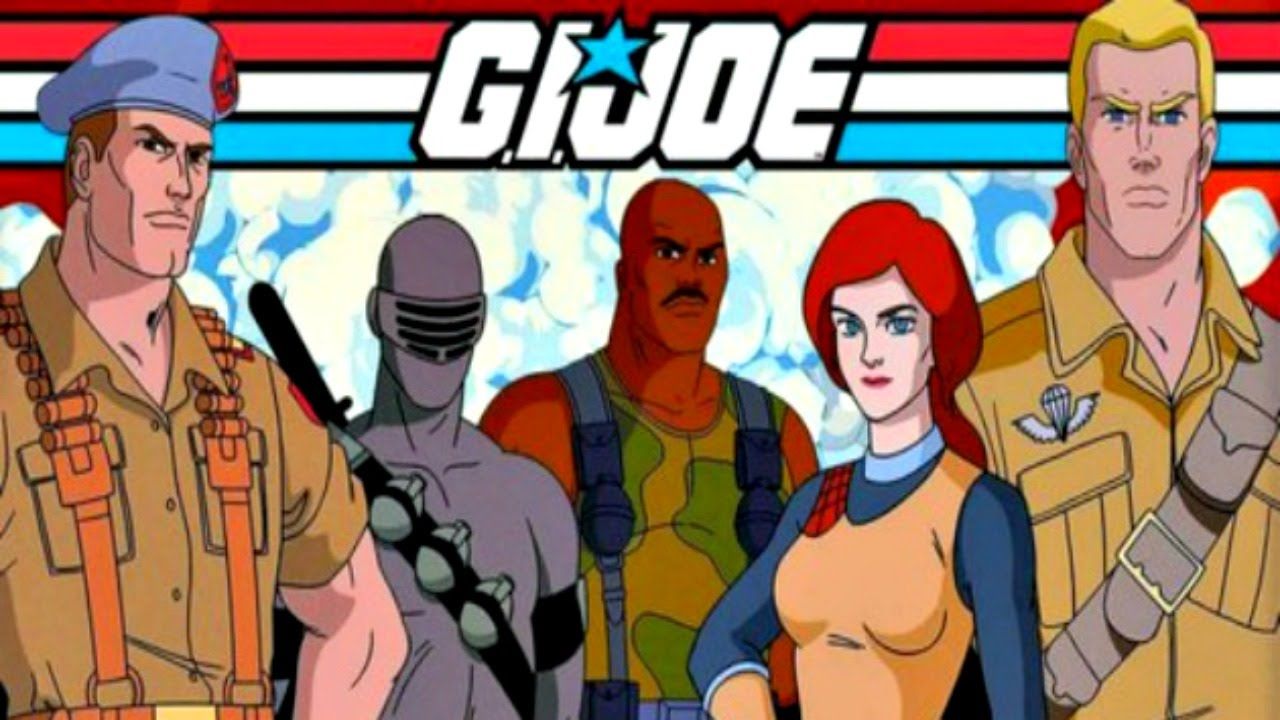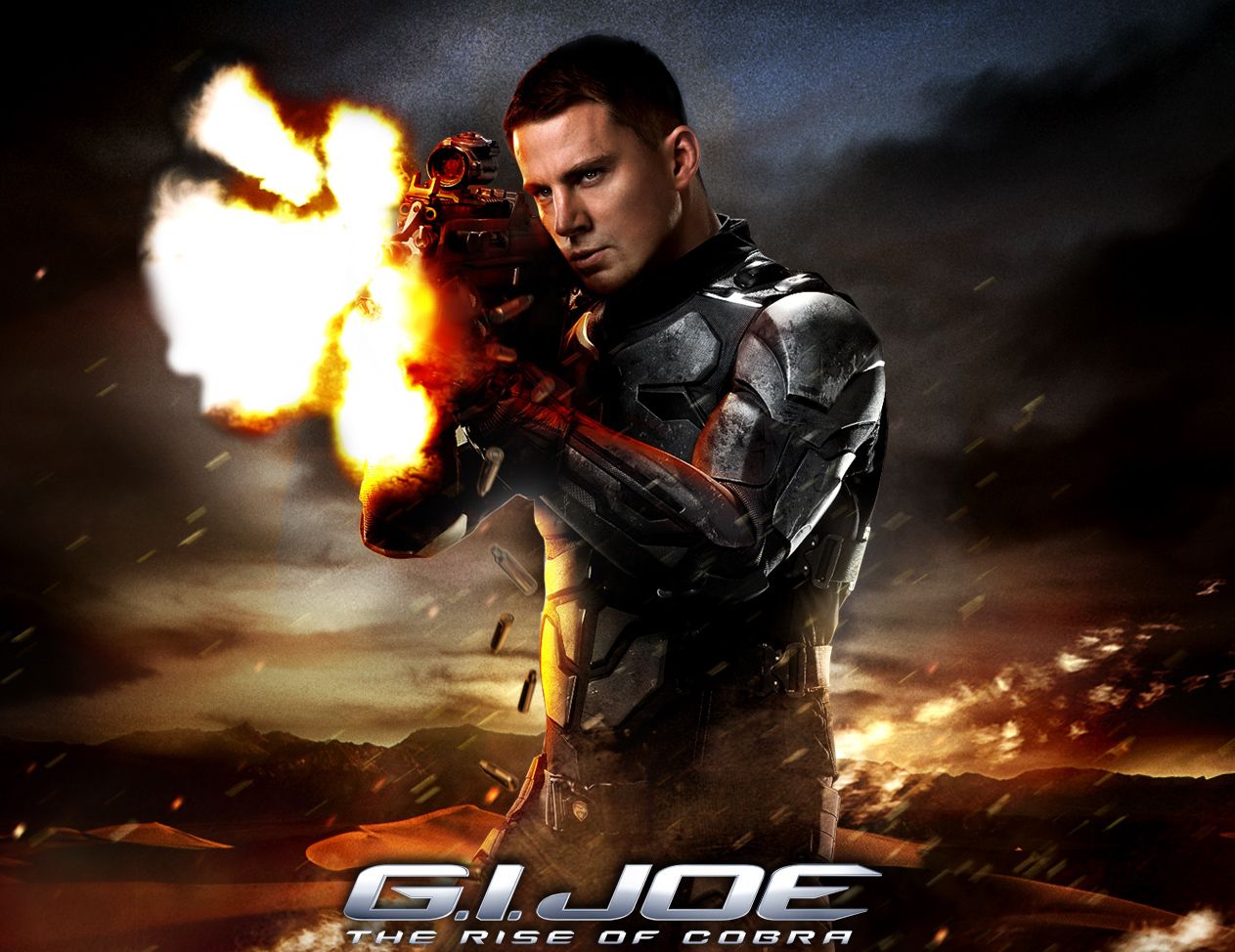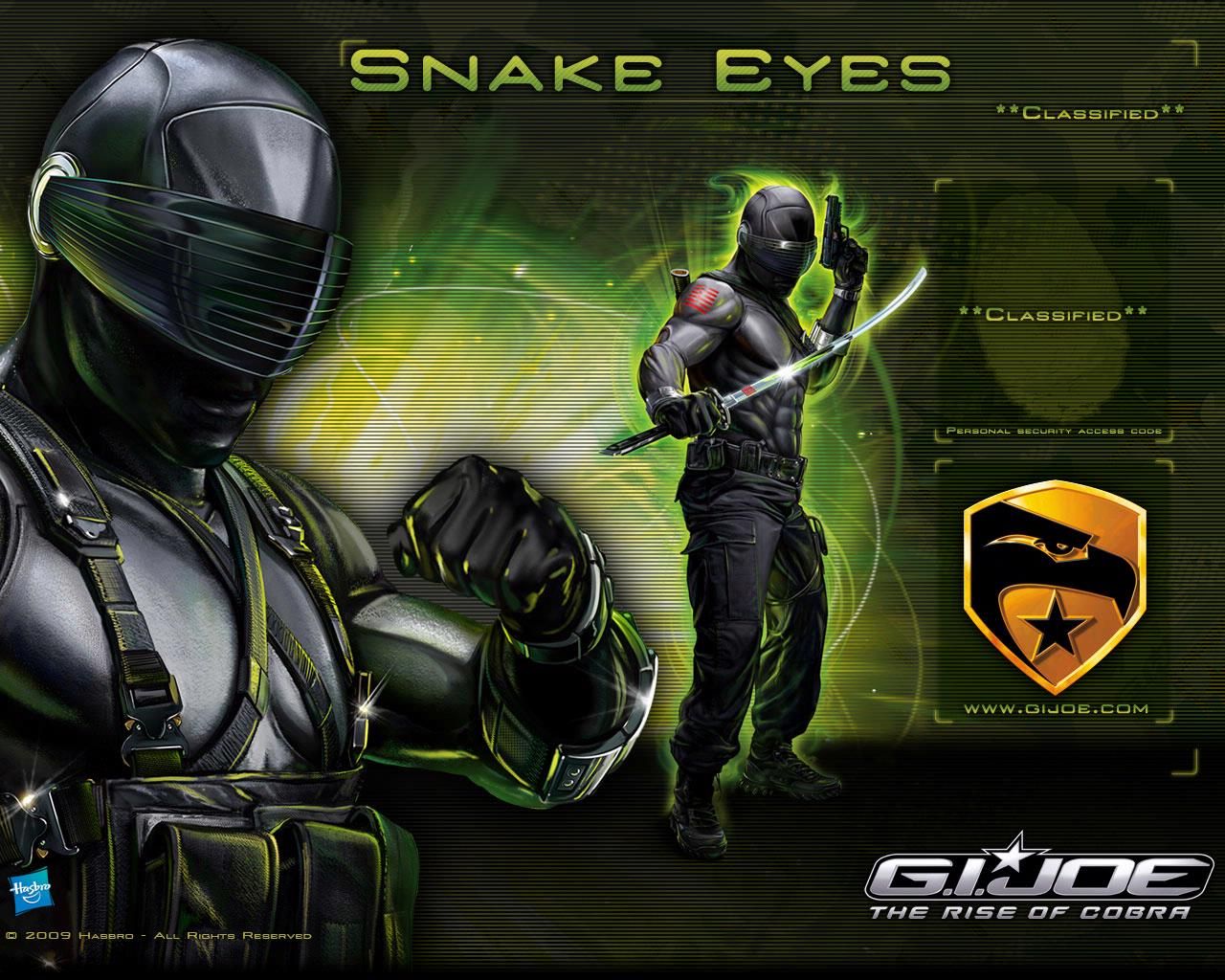For over 50 years the G.I. Joe line of action figures has been one of the most successful and inventive toy products in history. Created by Hasbro in 1964, the original G.I. (Government Issue) Joe release included 12-inch figures representing the three branches of the U.S. Armed Forces along with the marines. There was "Action Soldier" (U.S. Army), "Action Sailor" (U.S. Navy), "Action Pilot" (Air Force), and "Action Marine" (Marine Corps). They had no names, enemy or instructions but became a huge success amongst young children, particularly boys. The success of Joe's took a hit during the Vietnam War with the action figure straying away from war themes and marketed as an adventurer. G.I. Joe's popularity steadily declined during the 70s until the toy was relaunched as smaller 3.75-inch action figures in 1982. Incorporating a team of Joe's with their own colorful personalities and background stories and a big bad in the form of terrorist network Cobra, these figures helped revive the failing toy line. A comic book series by Marvel and an animated television series were released in conjunction with the new figures and helped G.I. Joe reclaim its place as one of the most revered and best selling toys of all time.
Since the relaunch in the 80s, G.I. Joe has gone through a number of changes with an assortment of limited edition and special figures created alongside the regular output of toys. The comic book series has continued to thrive under IDW Publishing with the original G.I. Joe: A Real American Hero getting its fourth run while a number of one-off series and cross-over comics have been released. Even though the animated television series returned in various guises over the years, the last official release was the 2010 series G.I. Joe: Renegades. There's also been a number of G.I. Joe video games and two feature films, with a third set for a tentative 2020 release.
G.I. Joe action figures have been the source of pleasure for many young children (myself included) but like any successful product, there are some unsavory things about G.I. Joe's history you might not be aware of. There have been many dark secrets Hasbro and the like has tried to hide from the public so we've done some digging and found 25 you might not be aware of.
25 I'm A Barbie Girl In A Barbie World
First launched in 1959, it didn't take long for Barbie to become one of the biggest toy creations in history. The female dolls were selling by the truckload and helped turn Mattel into the second biggest toy manufacturer in the world. Toy creator and licensing agent Stan Weston quickly noticed the how well Barbie was selling and knew there must be a way he could cash in on the success.
So he created prototype dolls based on the U.S. Armed Forces.
He brought the military figures to Hasbro executive Donald Levine. After looking at the designs and plans, Levine reportedly told Weston “You will make a fortune with these.” Weston licensed the entire concept to Hasbro for $100,000, not realizing just how popular the toy line would become.
24 Action Figures, Not Dolls
While the idea for G.I Joe's was fantastic, Hasbro wasn't too sure how to go about marketing the toy line. They had essentially created a male version of Barbie and while they had no doubt it would sell, Hasbro understood the marketing of the toy would be key to its success. There is no way they could sell the toy as a doll, as this would automatically turn off almost every young boy in the country. You have to remember this was the 60s when men and women had their defined roles and had to stick to them. After much brain storming, they came up with the term "action figure." This became the term to describe all similar figurines produced over the years, with Hasbro trademarking the phrase, "America's movable fighting man," and displaying it on the packaging.
23 Cover Art Causes Controversy
For 50 years, G.I. Joe has been creating stories about the "real American hero" full of masculinity and male-dominated characters but a recent issue of the current G.I. Joe comic series flipped this on its head. Acclaimed artists Ed Luce was asked to design a variant cover for G.I. Joe #7. His approach was very different, with this cover art featuring The Dreadnoks, a biker gang that regularly appears in the comic book, wrestling each other in some provocative poses.
It was gay-themed without being over the top.
Luce was given free reign by Hasbro and IDW and created a cover with gay overtones inspired by the 80s run of the comic book series. While the cover did receive some negative feedback from people online the general consensus has been one of positivity, with most fans happy to see the world of comics tackle the issue of preference head-on.
22 You Can't Call Them That!
It's hard to fathom in the current era but when Hasbro began selling G.I. Joe's in the 60s they released a line of action figures with a racial prefix. A year after the successful release of the first four Joe's in 1964, Hasbro released a black figure to market at African Americans.
The original action figure was just a normal Joe but colored black.
It didn't look like much effort had been put into replicating African Americans and the figure was quite offensive looking. Despite the name, these Joes were a hit and as the company developed better models they did the same for this line of Joe, with facial improvements to make them stop looking like a white Joe turned black. It wasn't until 1969 that the prefix was dropped and all action figures were referred to as G.I. Joe's, no matter their race or gender.
21 Vietnam War Backlash Hits Hasbro
G.I. Joe's proved extremely popular when first released during the mid-60s but by the end of the decade, this had changed. The Vietnam War had been raging for 15 years and there seemed no end in sight. American's were becoming disillusioned with the war and their Government and this reflected sales of G.I. Joe figures. Profits were down and parents angry. They didn't want their children playing with war-related toys that appeared to make war seem fun, particularly when they were viewing the devastating effects of the war first hand on their televisions at home. People began protesting not only the war but anyone who seemed to be encouraging it, including Hasbro. People began boycotting the toys and groups of parents even protested outside of the companies headquarters in Rhode Island and at trade events. Hasbro realized they needed to change things up quickly. Enter the Adventure Team.
20 Change As Good As A Holiday
As mentioned above, the Vietnam War had a detrimental effect on the sales of G.I. Joe's and Hasbro understood they too had to get with the program. They did their best to distance themselves from the war effort, downplaying the war theme of the original G.I. Joe toys that initially helped them find success.
They now dubbed G.I. Joe's as "Adventure Team."
The toy line officially became known as "The Adventures of G.I. Joe," with civilian action figures created with no ties to the war. These figures featured more realistic elements such as hair and beards and included attributes such as "Kung-Fu Grip." The figures included the likes of "Talking Adventure Team Commander," "Land Adventurer," "Sea Adventurer," and "Air Adventurer," and continued Hasbro's strangle hold on the action figure genre of toys.
19 Downsizing Is Sometimes A Good Thing
Throughout the 70s, G.I. Joe figures remained a big seller for Hasbro as they began incorporating new initiatives. The first Joe to be given a name, "Mike Power - Atomic Man," was released as well as a line of intergalactic Joe's who adventured into space. When 1980 hit, Hasbro decided they needed to freshen up the toy line and decided to bring back the original idea of G.I. Joe as wartime heroes, although this time they created specialist characters who worked as a team instead of individuals. The main difference between these figures and the ones they were making was the size. Hasbro ditched the 12-inch figures for a line of 3.75-inch action figures. Cost-effectiveness and the popularity of other toys (I.E. Star Wars figures) helped change the size of these iconic toys.
18 Rocky Balboa A Member Of The Joe's
It's hard to believe but Sylvester Stallone's most iconic character, Rocky Balboa, was almost a G.I. Joe. Stallone was fresh from the success of Rocky IV, in 1985, where Rocky defeated Ivan Drago and single handily put an end to the Cold War. Hasbro wanted to cash in on the success of Rocky and was set to create a Rocky figure and have him become part of the comic book series. G.I. Joe: Order of Battle#2, released in 1986, contained many Joe character bios, including one for Rocky Balboa who was listed as a personal combat instructor. Mock sketches of Rocky were made as well as a wax head but it wasn't to be. Rival toy company Coleco began creating action figures and vehicles based on Stallone's other successful franchise, Rambo, and offered the Italian Stallion more money to sign over the Rocky property to them.
17 And Knowing Is Half The Battle
Ever notice how at the end of each episode of the original G.I. Joe animated series there was a Public Service Announcement? Well, these weren't just done out of the goodness of the toy creators hearts. Most adults were aware the animated series was just a way for Hasbro to advertise new figures and vehicles while the emphasis on making war look fun was also a turn-off.
So the creators had to find a way to make the cartoon informative.
They did this by adding short PSAs at the end of each issue. Each PSA featured a G.I. Joe teaching a young child a lesson, such as Roadblock warning kids not to give strangers their address to Footloose explaining how to treat a nosebleed. Some were quite absurd - you can watch all of them here - and each ended with the catchphrases, "And knowing is half the battle."
16 Duke Didn't Really Make It
G.I. Joe: The Movie was a 1987 spin-off of the cartoon series released to cash-in on at the height of the G.I. Joe success. The film was meant to receive a cinematic release but after The Transformers: The Movie failed it went directly to video. The film revolved around Joe's taking on Cobra who have joined forces with an ancient reptilian species. The synopsis alone is enough reason to suggest why the film didn't make it to the big screen, but either way, it was released to mixed reviews.
In the original ending of the film, Duke was meant to perish, but after Optimus Prime's passing in The Transformers film was criticized by fans, a voice over confirmed Duke was actually in a coma and he survived his injuries. This upset many fans who thought Duke passing added an emotional arch to the film and illustrated that war isn't as fun as the G.I. Joe comics and series make it appear to be.
15 Comic Book And Animated Series Keeps Joe Alive
Hasbro's head of Boy's Toys, Bob Prupis, had spent almost three years trying to bring back the original war-themed G.I. Joe action figures. Having presented the smaller figures with new backstories he had one last problem, convincing the executives they would sell. Given one last chance to present a commercial idea, Prupis managed to get Marvel on board to create a comic book series that would be used to showcase all the new G.I. Joe toys they had coming out.
Marvel writer and artist Larry Hama was in charge of the redesign.
He created all new characters with mini-profiles as well as being responsible for Cobra, the Joe's main adversary. Presenting his new range of figures alongside the comic to Hasbro executives, Prupis was given the green light to release his new version of Joe's. The new range of action figures was predicted to sell between $12 - $15 million worth of toys in the first year but ended up making Hasbro over $50 million.
14 G.I. Joe Comic Cancelled After Insensitive Tweets
Since Marvel released the first G.I. Joe comic in 1982, the property has gone through many different alliterations and companies, with IDW Publishing now holding the rights to the comics. They released some great series and one-offs but caused a stir last year when they canceled Scarlett’s Strike Force just three issues in after it was revealed one of the writers had taken to Twitter and caused some outrage. Writer Aubrey Sitterson tweeted comments about the 9/11 tragedy and implied that it's wrong people who weren't there during the trauma can claim to feel as emotionally affected as those that were. Sitterson was savaged by many and even received threats, with IDW Publishing backing the freelancer but putting an end to Scarlett's Strike Force.
13 Snake Eyes The Cobra Agent
Of all the G.I. Joe characters none are more well known than Snake Eyes. The heart and soul of the unit, the martial arts expert has appeared in every series of the comic book and animated television show. Despite being the face of the Joe's, Snake Eyes has also appeared as an agent of Cobra in some South American countries.
While it's unknown why, there are figures that depict Snake Eyes as a Cobra warrior.
As you can see from the pictures above one version of the character is named Cobra Invasor and has a larger silver Cobra logo on his chest. In another, he is called Mortal Invasor and has a silver helmet as well as a silver Cobra logo on his chest. The third version of the action figure comes from Argentina where he goes by the name Cobra Mortal and sports a red and silver costume.
12 Zartan Isn't All There
One of the fan favorite G.I. Joe villains is the nefarious Zartan. He debuted as part of Hasbro's G.I. Joe: A Real American Hero toyline in 1984 and like all Joe's was given a bio card detailing his character. This was something introduced by Larry Hana to help flesh out the Joe's personalities. Unfortunately, Zartan's bio caused some unwanted controversy. Zartan was known as a master of disguises and this was described poorly in his bio. He was reported as being an “Extreme paranoid schizophrenic. Grows into various multiple personalities to such an extent that the original personality becomes buried and forgotten.” The Canadian Mental Health Association took offense to what had been written and urged Hasbro to change things. It's believed Hasbro apologized for the gaff and removed this part of Zartan's profile from future action figure releases.
11 Action Man Joe's Distant Cousin
It didn't take long for the first G.I. Joe action figures to become massively popular in America after launching in 1963. Kids across the country couldn't wait to get their hands on these new toys and the news soon filtered overseas to the UK about these action figures for boys. British toy company Palitoy were the first to act, getting in touch with Hasbro and acquiring the license for G.I. Joe's in Britain. The only problem was most UK citizens weren't overly familiar with the term G.I., so they renamed the figures, Action Man. The first incarnation were similar to the army themed Joe's but as the years went on Action Man became more British. While maintaining the army theme, Action Man was soon linked to adventuring and exploring to help distinguish him from his American cousin. Action Man took a brief hiatus when Palitoy shut down in 1984 before being revived during the Gulf War in the early 90s.
10 Scene Cut From G.I. Joe: The Movie
Duke's end wasn't the only controversy to arise from the animated G.I. Joe: The Movie. The film was also set to feature a topless scene, which doesn't really make sense. When the character Zarana removes her Heather disguise she was supposed to expose her bareback, eluding to her having no top on.
But Hasbro got cold feet at the last minute.
They decided the scene was too risqué and wanted it scrapped. While storyboards exist for the sequence it was never actually made or featured in the film and wasn't necessary as it didn't further the story one bit. While many a young boy were probably hoping the scene would be included, its absence is welcome, although it does make the scene slightly jarring when rewatched.
9 Duke Over Hawk In Season One
When the first animated series of G.I. Joe debuted in 1985 it was used as a way to market the newest toys. At that time, Hawk was one of the original G.I. Joe's and a fan favorite who managed to work his way up through the ranks, eventually becoming the leader of the Joe's. A popular character, Hawk, doesn't appear in the first season of G.I. Joe: A Real American Hero, because he was overlooked for new figure, Duke. A skilled soldier, Duke was part of the marketing campaign for Joe's in 1985 and was given the lead role in the animated series. This meant Hawk went unseen until the second season where he was brought in to lead the team in their fight against Cobra.
8 Joe's Could Have Been Fighting The Soviets
During the 80s, the Cold War was raging and the fear of communists invading America was a real threat. The Reagan era of patriotism helped G.I. Joe become a children's favorite as kids got the chance to battle the oppressing forces trying to eradicate America's freedom. While the evil organization Cobra was the main enemy it very nearly turned out to be the Soviets. The creators of G.I. Joe wanted Cobra to be a Soviet group attempting to infiltrate the United States.
Thankfully, they came to their senses.
An American cartoon portraying Russians as the enemy might not have gone down well with the Soviets and would have only increased tension between the nations. The writers did create a Soviet equivalent to G.I. Joe called The Oktober Guard, who featured in a few episodes of the show and helped the Joe's combat Cobra.
7 Channing Tatum Hates G.I. Joe: The Rise Of Cobra
Nostalgia is a big money maker these days so when it was announced a G.I. Joe film was in development nobody was surprised. Inspired by the original comic book series and animated show, G.I. Joe: The Rise Of Cobra focused on an elite military unit going up against a notorious arms dealer. The film featured a host of famous G.I. Joe characters and some big-name actors, including Channing Tatum. A box office smash, the film received mixed reviews, none more so than from star Tatum. While on The Howard Stern Show Tatum revealed he only signed on to be in the film to fulfill his three-picture deal with Paramount.
"Look, I'll be honest. I [REDACTED] hate that movie," Tatum said.
"The script wasn’t any good," said Tatum. "And I didn’t want to do something that I … was a fan since I was a kid and watched every morning growing up — and didn't want to do something that was (1) bad and, (2), I just didn’t know if I wanted to be G.I. Joe."
6 Post Credit Scene Axed From G.I. Joe: The Rise Of Cobra
Post-credit scenes are all the rage these days with comic book adaptations but it worked out best the one suggested for G.I. Joe: The Rise Of Cobra was axed. Larry Harma was brought in to rewrite the original 1998 screenplay written by John Paul Kay. One of the major problems he had was an after the credits scene where Snake Eyes, a mute, tells a joke to the G.I. Joe team. Harma was strongly against this as he saw Snake Eyes talking as going against everything the character stands for and was about. I have to admit it would have been a horrible decision if they had changed the character to this extent and am pretty stoked they listened to Harma's advice. It's just a pity he couldn't have reworked the script even more and turned it into something watchable.

